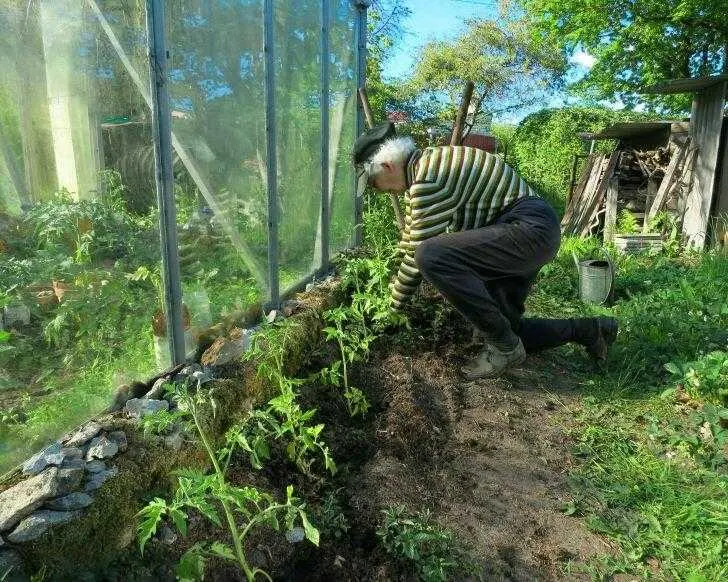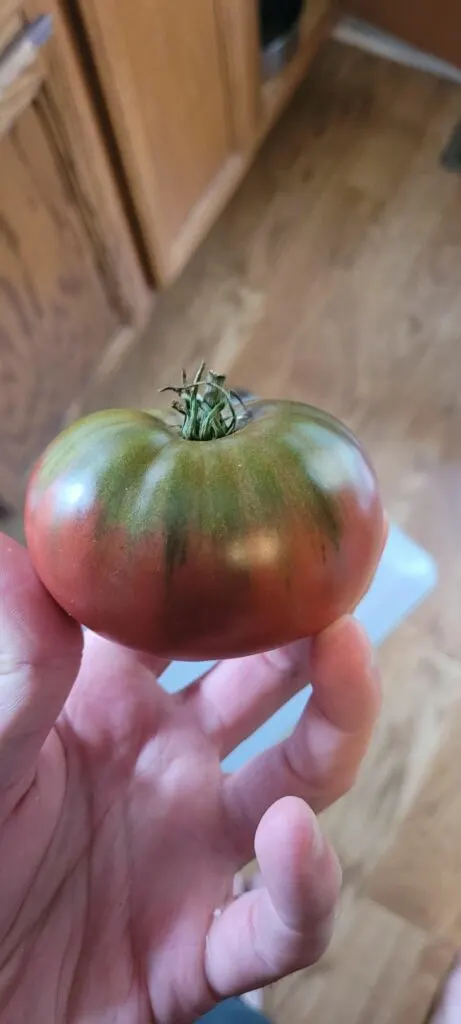Tomatoes are a beloved vegetable among gardeners in North Carolina but planting them at the wrong time can lead to a disappointing harvest.
Knowing when to plant tomatoes in North Carolina ensures a bountiful crop of juicy, ripe fruit.
The ideal time to plant tomatoes depends on several factors, including the specific location within the state, the climate, and the variety of tomatoes being planted.
Gardeners in different regions of North Carolina have different planting times, and it’s crucial to choose the right time to plant based on your location.
In today’s article, we will explore when to plant tomatoes in North Carolina, along with other essential factors that can affect the growth and yield of tomato plants.
Following our guidelines, you can enjoy a successful tomato harvest that will make all your hard work and effort worthwhile.
So, let’s dig in and learn how to grow the best tomatoes in North Carolina!

Understanding North Carolina’s Climate And Soil!
When determining the right time to plant tomatoes, North Carolina’s climate and soil are critical factors to remember.
Understanding the state’s climate and soil can help gardeners choose suitable varieties, determine the optimal planting dates, and implement appropriate growing techniques.
- North Carolina has a humid subtropical climate, with hot summers and mild winters.
- The state is known for its humidity and abundant rainfall, which can lead to issues like fungal diseases and pest infestations.
- Tomatoes thrive in warm weather, but it’s essential to consider the state’s hot and humid conditions when planning the tomato growing season.
- Soil composition is another crucial factor to consider when planting tomatoes. North Carolina’s soil varies throughout the state, with some areas having sandy soil while others have clay or loamy soil.
- Soil texture can affect drainage, water retention, and nutrient availability, impacting tomato plant growth.
- Testing the soil’s pH level and nutrient content before planting tomatoes is essential. Tomatoes grow best in slightly acidic soil with a pH of 6.0 to 6.8.
- Gardeners can amend the soil with organic matter, like compost or manure, to improve soil fertility and structure.
By understanding the state’s climate and soil, gardeners can make informed decisions about planting and caring for their tomato plants, resulting in a successful harvest.
Therefore, consider the above points if you plant some tomatoes in North Carolina.
When to Plant Tomatoes in North Carolina?
Now, let’s see when to plant tomatoes in North Carolina.
The best time to plant tomatoes in North Carolina depends on your location and your area’s expected last frost date.
In the western and mountain regions of North Carolina, where the last frost date is typically around mid-April, tomatoes can be planted outdoors around mid-May.
In the central and eastern regions of the state, where the last frost date is typically around mid-April, tomatoes can be planted outdoors around early May.
“As a general rule, tomatoes should be planted outdoors after the last frost date has passed and the soil has warmed to at least 60°F.”
If you want a head start on the growing season, you can start your tomato seeds indoors 6 to 8 weeks before the last frost date.
Plant the seeds in sterile potting soil in small pots or trays, and keep them in a warm, well-lit area until they germinate.
Once the seedlings have several leaves, transplant them into larger pots or directly into the garden.
Choosing the Right Tomato Variety for North Carolina!
Choosing a suitable tomato variety is crucial for successful tomato cultivation in North Carolina.
With a diverse climate and soil type, selecting a tomato variety that can thrive in these conditions is essential.
There are determinate and indeterminate tomato varieties.
Determinate varieties produce fruit all at once and are suitable for canning and preserving, while indeterminate varieties produce fruit continuously throughout the season and are ideal for fresh consumption.
It is also vital to consider disease resistance when selecting a tomato variety.
North Carolina is prone to diseases such as tomato blight and wilt, so selecting a variety with disease resistance can help to prevent crop loss.
Here are some popular tomato varieties that do well in North Carolina:
- Celebrity: A determinate variety that produces large, round, red fruit. Celebrity resists many tomato diseases and does well in hot, humid weather.
- Cherokee Purple: An indeterminate heirloom variety with deep, reddish-purple fruit. Cherokee Purple is known for its rich, complex flavor and does well in North Carolina’s hot summers.
- Early Girl: An indeterminate variety that produces medium-sized, round, red fruit. Early Girl is an early-maturing variety that does well in hot, humid weather.

With all that aside, let’s look at some tips that will help you plant your tomato plants correctly.
Tips for Planting Tomatoes in North Carolina!
Here are some tips to help ensure a successful tomato harvest in North Carolina:
- The tomato plants must receive daily sunlight to grow and ripen properly. Ideally, they should get 7–8 hours daily.
- The tomato plants thrive in well-draining, enriched, and fertile soil. You must prepare your soil before planting. To do this, amend your soil by adding compost, manure, or other organic matter to improve the soil’s structure and provide the necessary nutrients.
- Tomato plants need enough space to grow and produce fruit. Keep a space of at least 2–3 feet between the plants, and stake or cage them for support.
- You must provide your tomato plants with enough water and nutrients to ensure they produce lots of fruits. Ideally, you should water them deeply once a week. Add water more frequently in hot and dry weather.
- Fertilize your plants every 2–3 weeks with well-balanced fertilizers or organic matter.
Now, let’s move on to harvesting our plants.
Harvesting Tomatoes In North Carolina
Harvesting tomatoes is an exciting time for any gardener, and in North Carolina, it’s an exciting time to enjoy the fruits of your labor.
Here are some tips and tricks for harvesting tomatoes in North Carolina:
Timing
It’s essential to harvest your tomatoes at the right time.
This will depend on the variety you are growing, but generally, when the fruit is firm and fully colored, it’s ready to be picked.
You can also gently squeeze the fruit to check if it’s ready. If it gives slightly, it’s ripe and ready to harvest.
Harvesting Technique
When harvesting tomatoes, use a sharp pair of scissors or a knife to cut the fruit from the stem. Be careful not to pull or twist the fruit, which can damage the plant and affect future growth.
Temperature
Tomatoes should be harvested during the cooler parts of the day, such as the early morning or late afternoon. This will prevent the fruit from being exposed to high temperatures and sunscald.
Storage
Tomatoes should be stored at room temperature, away from direct sunlight. If you have harvested a large amount, you can store them in a cool, dry place or the refrigerator for up to two weeks.
Pruning
It’s important to continue to prune your tomato plants during harvesting. This will encourage new growth and a continued supply of fresh fruit.
That’s all for today.
Conclusion!
I hope now you know when to plant tomatoes in North Carolina.
Planting tomatoes in North Carolina can be a rewarding and fruitful experience if done correctly. Knowing when to plant tomatoes, understanding the climate and soil, choosing the right tomato variety, and properly caring for the plants are all essential factors to consider.
It’s essential to take note of the best time for planting tomatoes.
You can enjoy a bountiful harvest of fresh and delicious tomatoes by being vigilant and making the right decisions.
Follow the tips above, and you are good to go.
Happy gardening!
